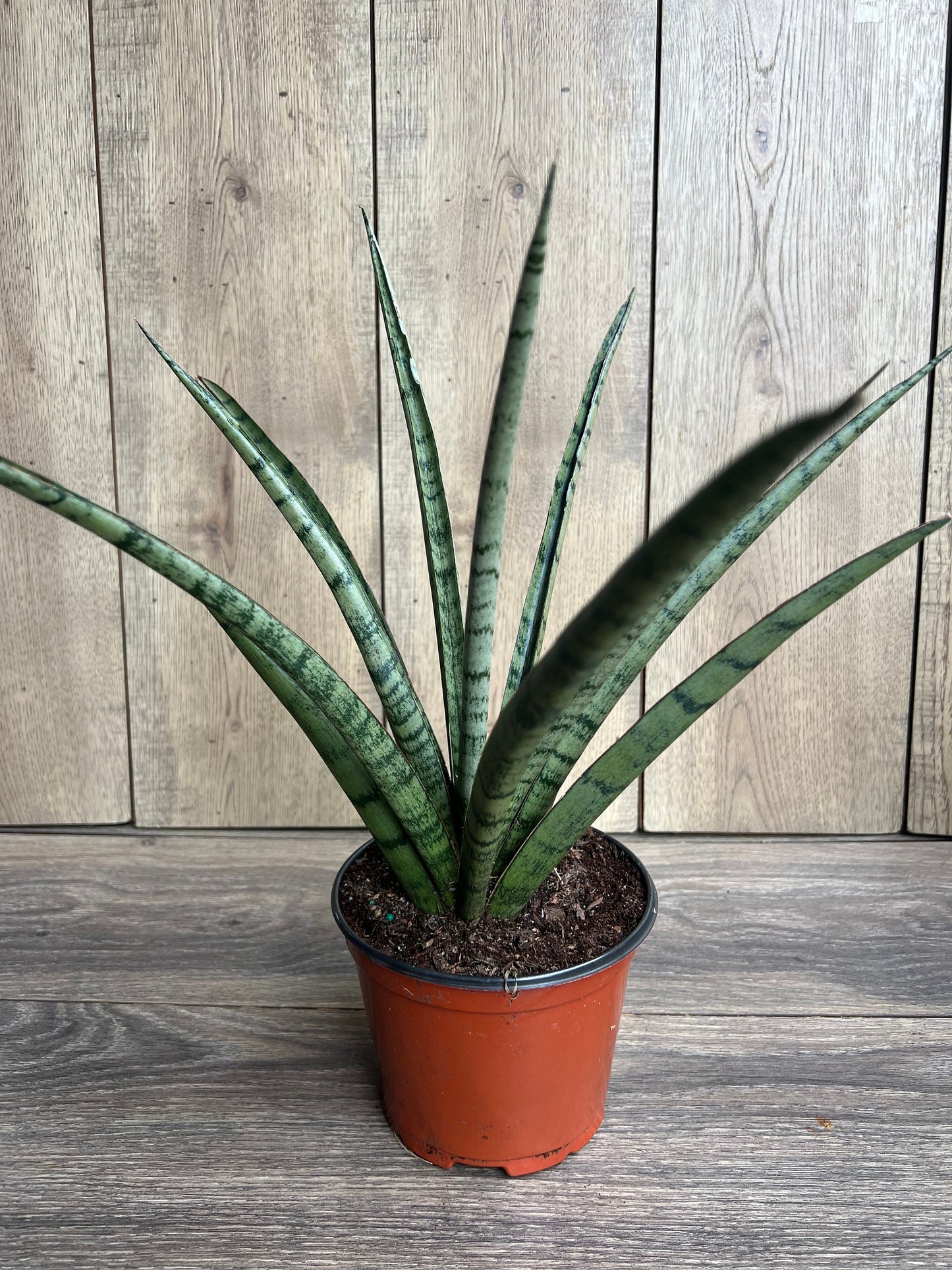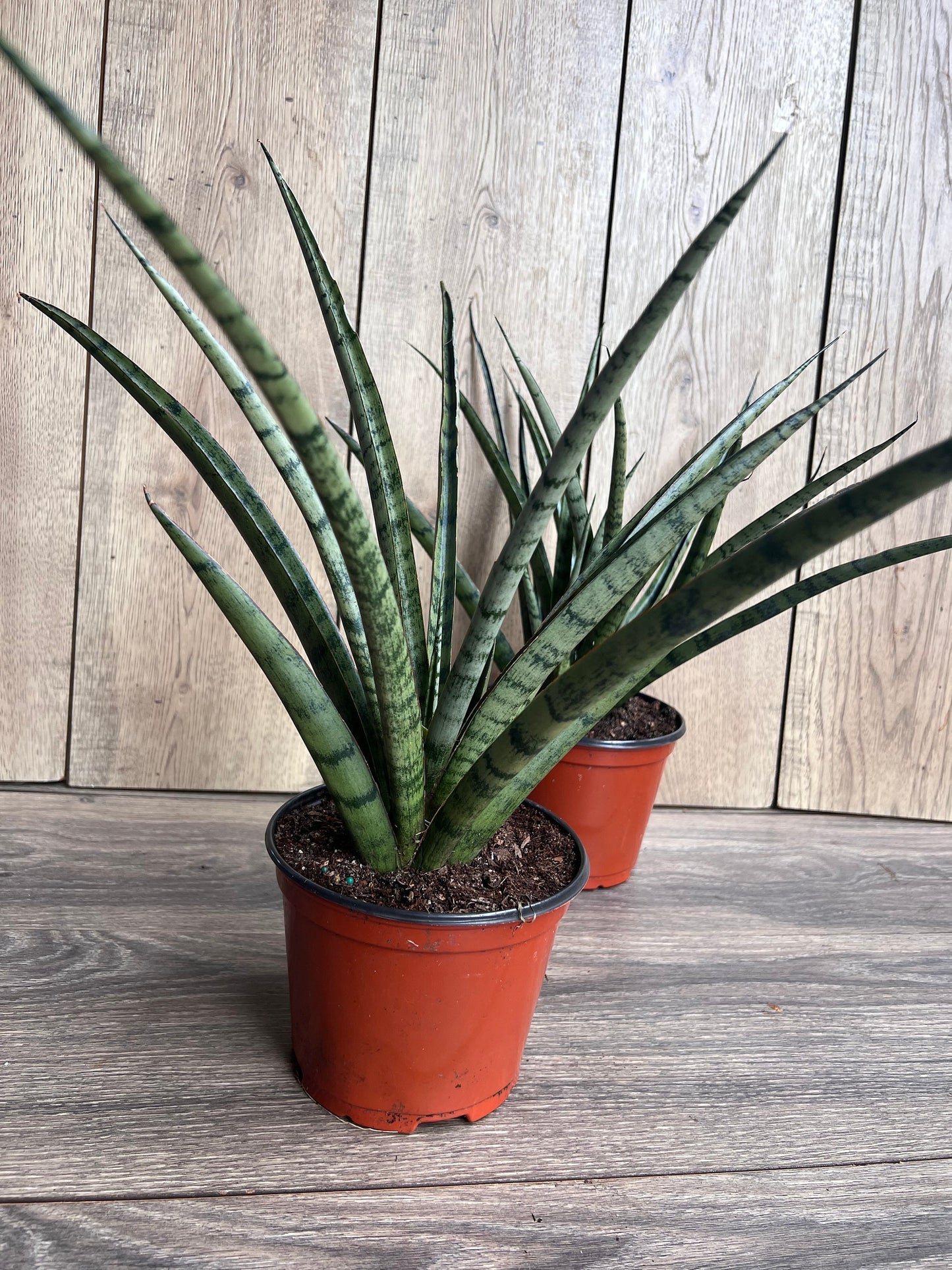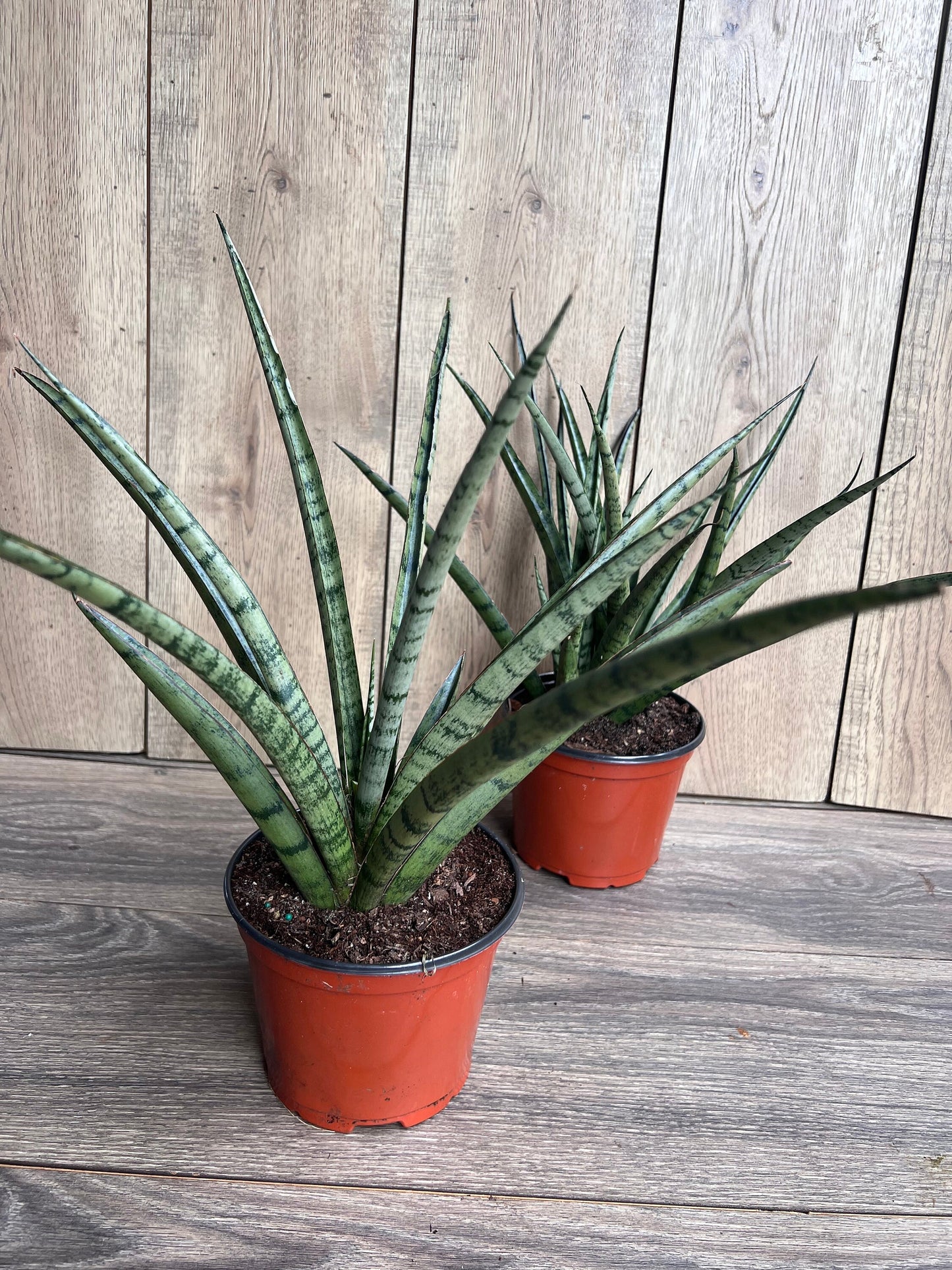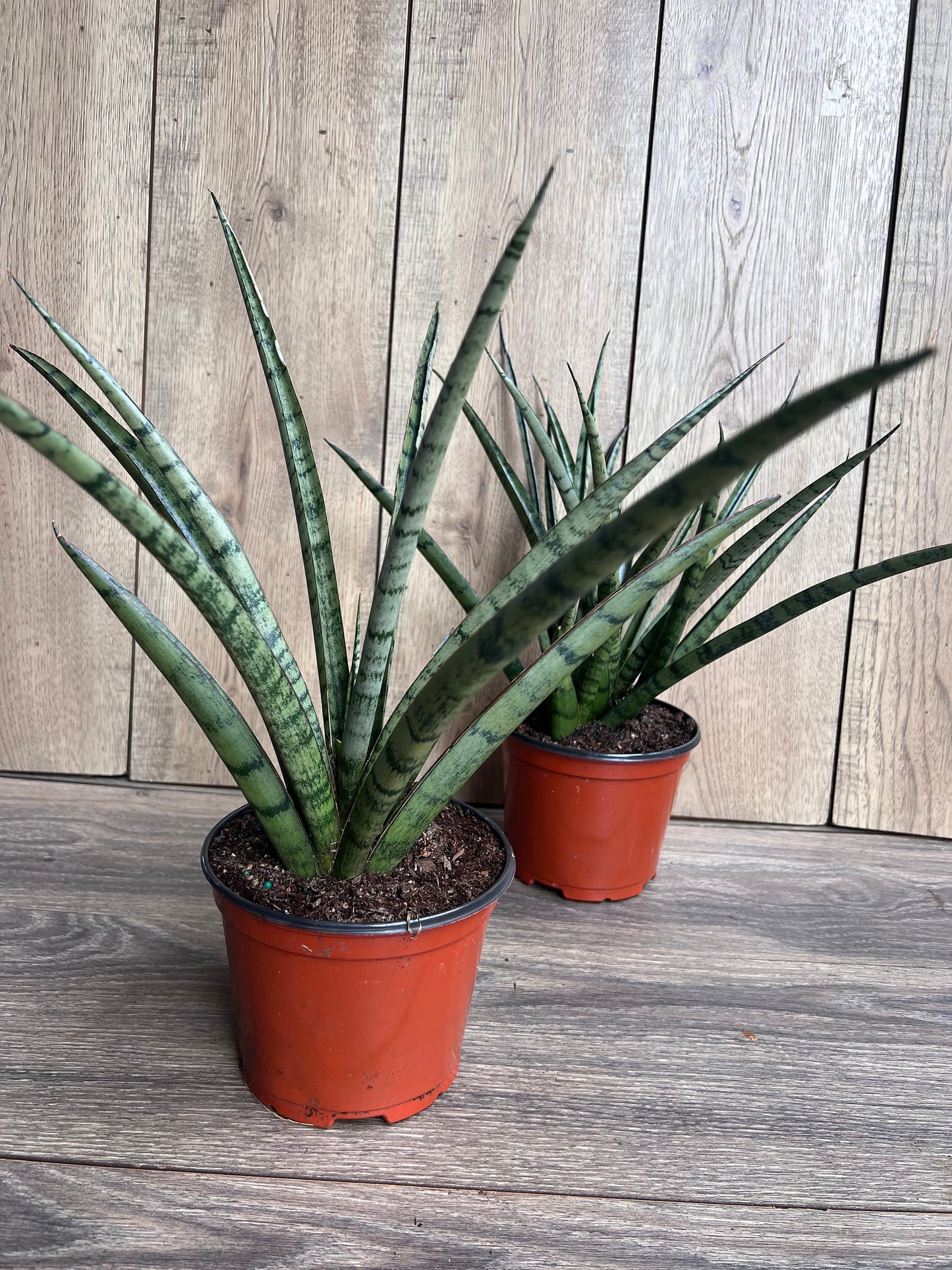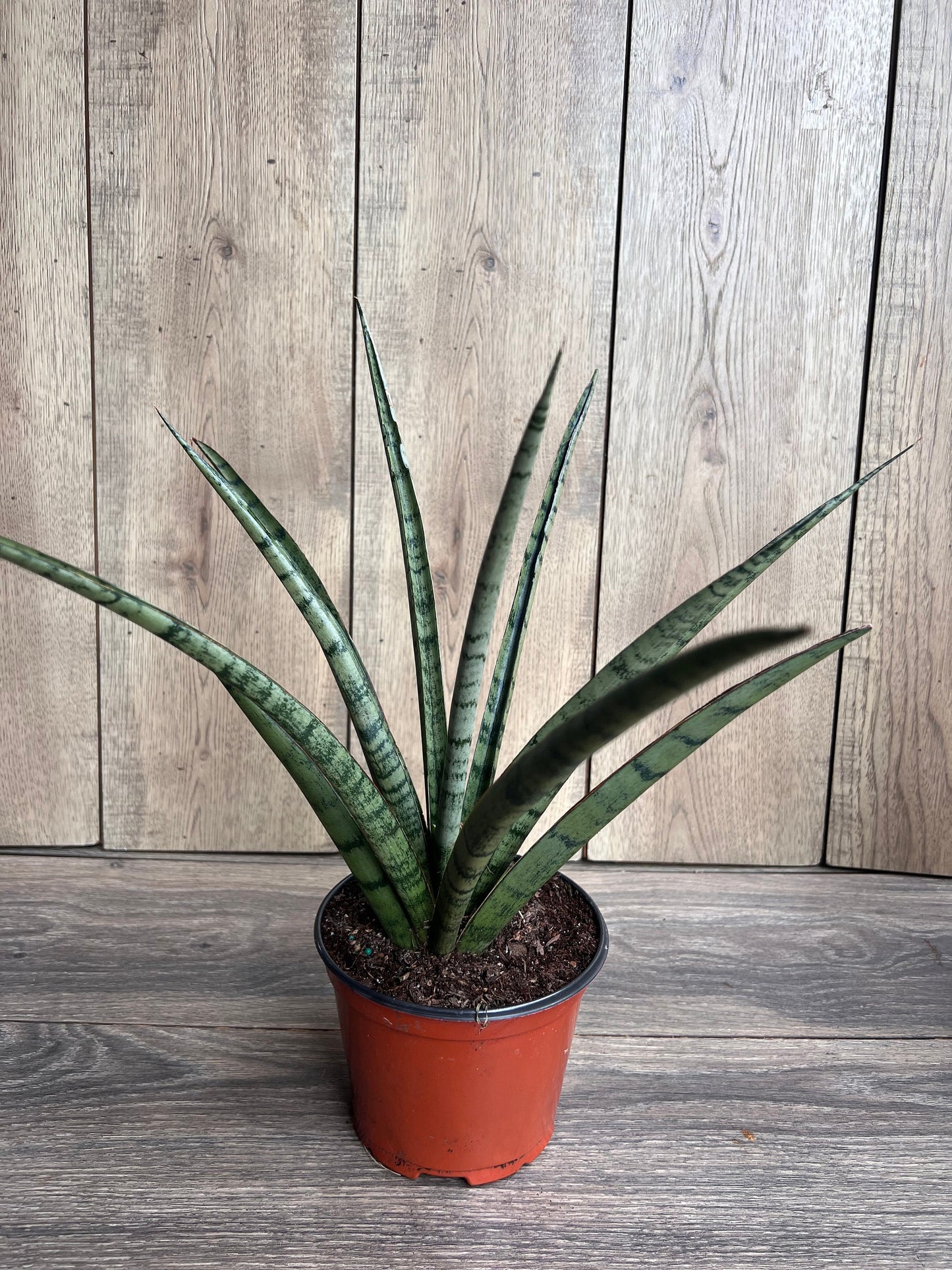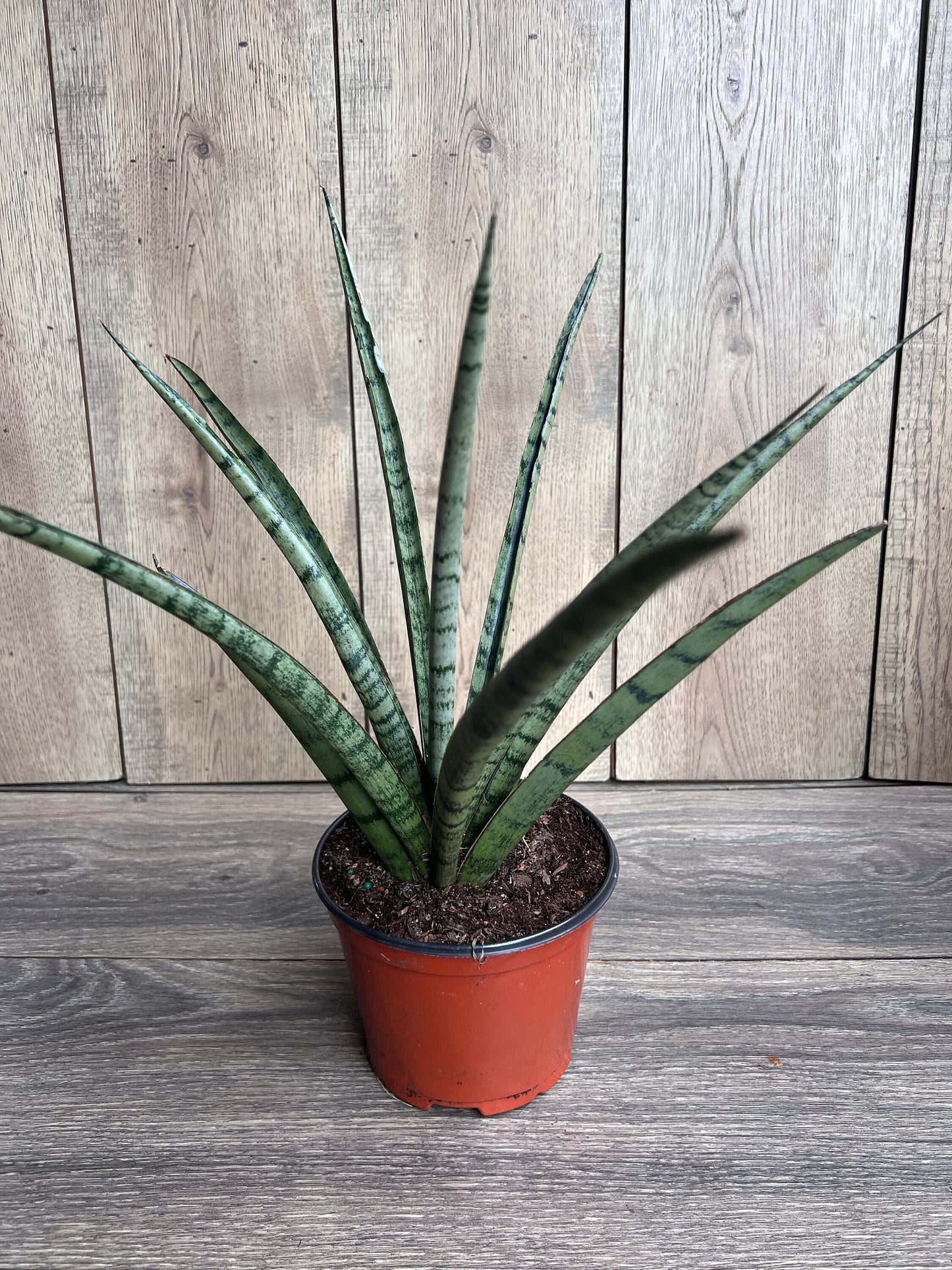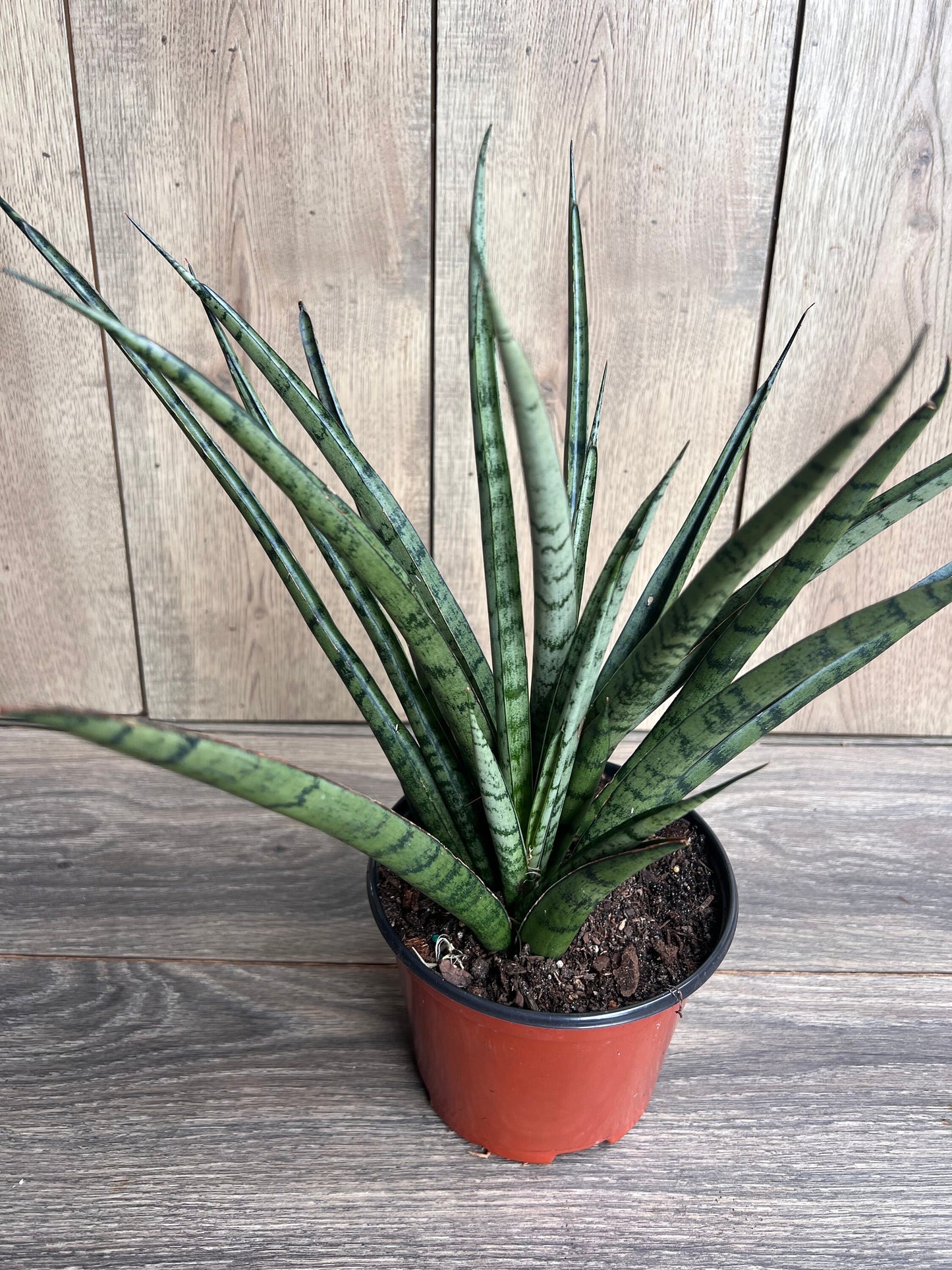Sansevieria Javancia in 6" Pot
Sansevieria Javancia in 6" Pot
Couldn't load pickup availability
You will receive one Sansevieria Javancia in 6" pot similar to the pictures
Sansevieria javancia is a lesser-known, striking variety of Sansevieria that stands out for its unique, narrow, upright leaves. Native to West Africa, this snake plant features elongated, rigid leaves that grow in rosettes, typically dark green with faint, light horizontal banding. The leaves are smooth, with a sleek and glossy texture, and the plant has a more compact growth habit compared to other Sansevieria species, usually reaching heights of around 12-18 inches. Like other varieties of Sansevieria, Sansevieria javancia is highly resilient and tolerant of low light, drought, and neglect, making it an excellent choice for beginner gardeners or for adding a decorative touch to offices and homes with minimal care. It also boasts air-purifying qualities, removing toxins from the air while being virtually pest-resistant and easy to maintain.
1. Light
- Bright, indirect light: Sansevieria javancia prefers bright, indirect light but can tolerate lower light conditions. In low light, it may grow slower, and the color of the leaves might fade a bit. For optimal growth, place it in a spot with plenty of filtered sunlight. Direct sunlight can scorch the leaves, so avoid placing it in full sun for prolonged periods.
2. Watering
- Infrequent watering: Like other snake plants, Sansevieria javancia is highly drought-tolerant and prefers to dry out completely between waterings. Water the plant every 2-3 weeks or when the soil is fully dry. During the winter months, reduce watering even further since the plant’s growth slows down. Overwatering can cause root rot, so ensure the pot has proper drainage and avoid letting the plant sit in water.
3. Soil
- Well-draining soil: Sansevieria javancia thrives in well-draining soil, which helps prevent root rot. A cactus or succulent mix works well, or you can mix regular potting soil with perlite or sand to improve drainage. The key is to ensure the soil is never soggy, as snake plants prefer to be kept on the dry side.
4. Temperature
- Warm temperatures: This snake plant does best in warm conditions, thriving in temperatures between 60°F to 85°F (16°C to 29°C). It should be kept away from cold drafts or places where the temperature drops below 50°F (10°C), as it is sensitive to cold and frost.
5. Humidity
- Average to low humidity: Sansevieria javancia is adaptable to normal indoor humidity levels and doesn’t require extra moisture. It can tolerate drier air and does well in standard household humidity, so there’s no need to worry about misting or using a humidifier.
6. Fertilizing
- Feed sparingly: During the growing season (spring and summer), you can fertilize your Sansevieria javancia once a month using a diluted, balanced liquid fertilizer. Avoid fertilizing in the fall and winter when the plant is not actively growing. Too much fertilizer can lead to overgrowth or damage, so it's better to under-fertilize than overdo it.
7. Pruning
- Minimal pruning: Sansevieria javancia requires very little pruning. You can remove any dead or damaged leaves to keep the plant looking neat. It typically doesn’t need much intervention, as the plant’s growth is slow and tidy. Only prune to control size or remove any undesirable foliage.
8. Repotting
- Repotting every 2-3 years: This snake plant has a slow growth rate and doesn’t need frequent repotting. Repot it every 2-3 years or when it becomes root-bound. Choose a pot that’s only slightly larger than the current one, as Sansevieria prefers to be a bit root-bound. Make sure the new pot has proper drainage to prevent water retention.
9. Pests and Diseases
- Pest-resistant: Sansevieria javancia is generally pest-resistant, but occasional pests like mealybugs, spider mites, or scale can appear. Check the plant regularly for pests, especially under the leaves or at the base. If pests are spotted, treat with insecticidal soap or rubbing alcohol. Overwatering can lead to fungal issues or root rot, so avoid letting the plant stay in moist conditions for too long.
10. Propagation
- Propagation by leaf cuttings or division: Sansevieria javancia can be propagated by cutting healthy leaves into sections (around 3-4 inches long), letting the cut ends dry for a day or two, and then planting them in a well-draining potting mix. Alternatively, you can propagate by dividing the plant during repotting, separating the rhizomes to create new plants.
Share
